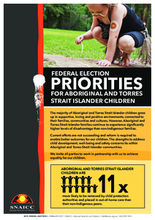Displaying 921 - 930 of 2214
Despite limited research on the effectiveness of mind-body interventions with children and adolescents in out-of-home care in Canada, a review of available literature on mindfulness, arts-based methods, and yoga suggests these therapeutic interventions promote resilience and positive development.
This paper sets out to give a rounded view of the Irish foster care system as currently constituted.
In the current study, data were collected from 184 youth at drop-in centers in Los Angeles using behavioral health questionnaires to explore the relationships between specific aspects of foster care experiences and engagement in HIV-risk behaviors.
This study explores the lived experience of child welfare worker turnover from the child's perspective, adding an important and underrepresented voice in the literature.
The purpose of this action research study was to investigate social workers’ perceptions of the problems that prevent successful family reunifications after foster care. The study explored social workers’ perceptions of barriers that prevent family reunifications in central Mississippi, USA.
In Wales, a significant body of work has been produced on and with care-experienced children and young people. This edited collection attempts to highlight these valuable insights in a single volume.
This brief from SNAICC – National Voice for our Children highlights the issue of the disproportional numbers of Aboriginal and Torres Strait Islander children in out-of-home care in Australia, which has reached "national crisis proportions," and outlines key steps that need to be taken to address this issue.
This study assesses whether LGBTQ youth are overrepresented in unstable housing and foster care and examines disparities in school functioning, substance use, and mental health for LGBTQ youth versus heterosexual youth in unstable housing and foster care.
In this exploratory study, through use of an online anonymous survey, local county child welfare caseworkers were asked to self-rate their knowledge of, exposure to, and comfort levels with children with developmental disabilities.
This study examined the effect of privatization policy on the issue of racial disparity in the child welfare system.



